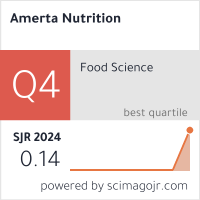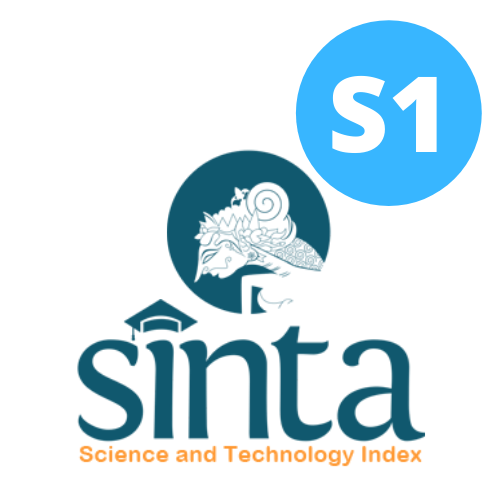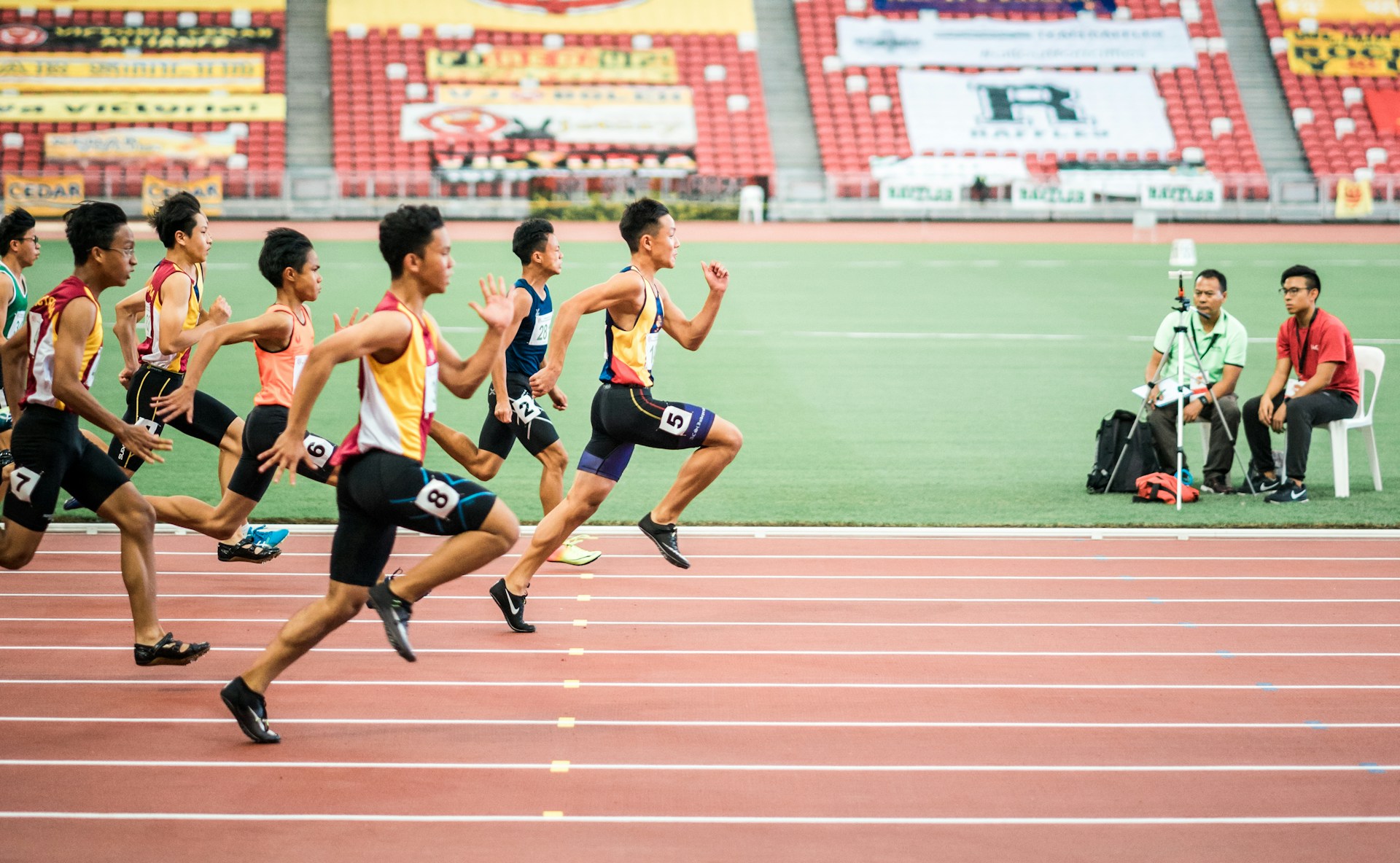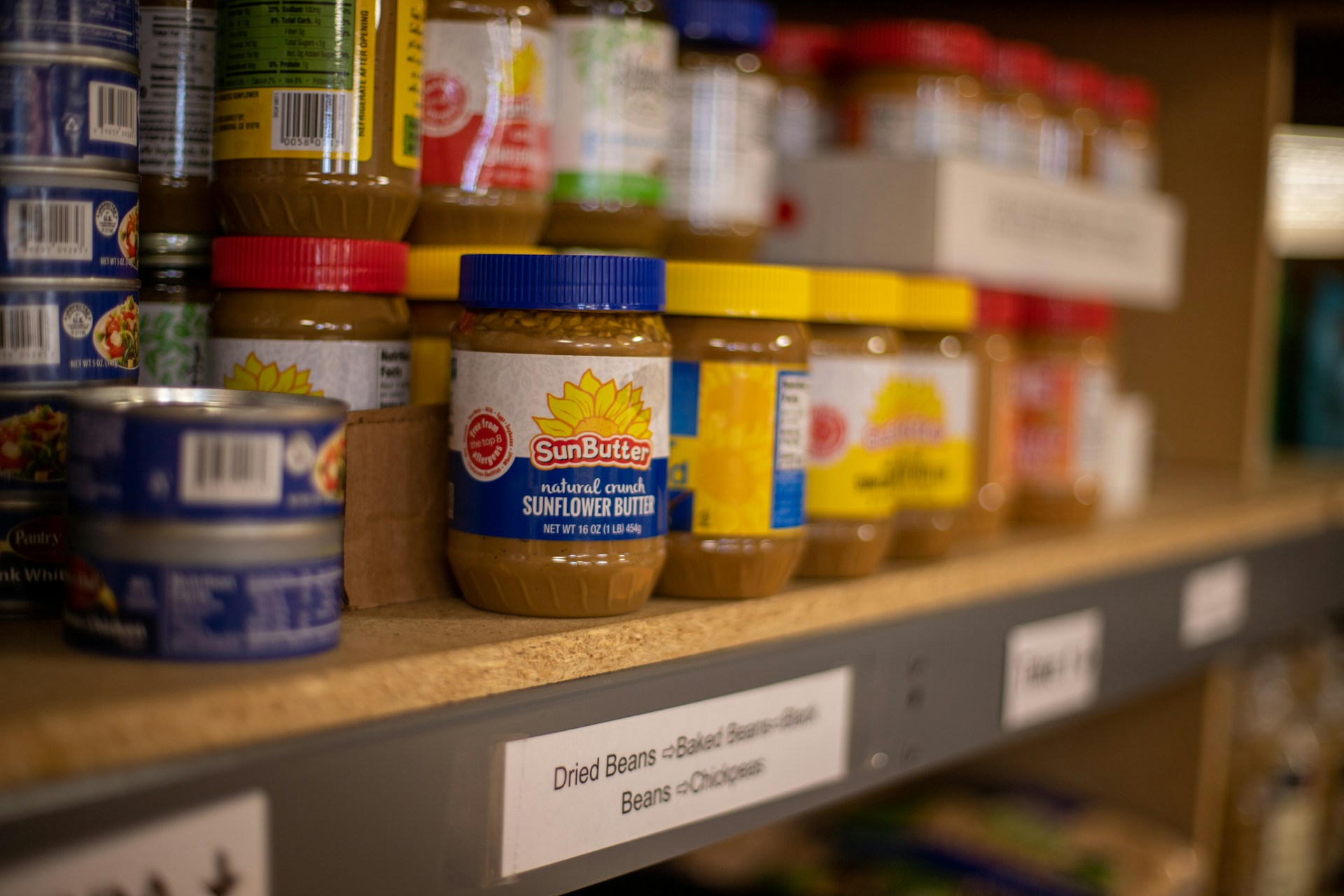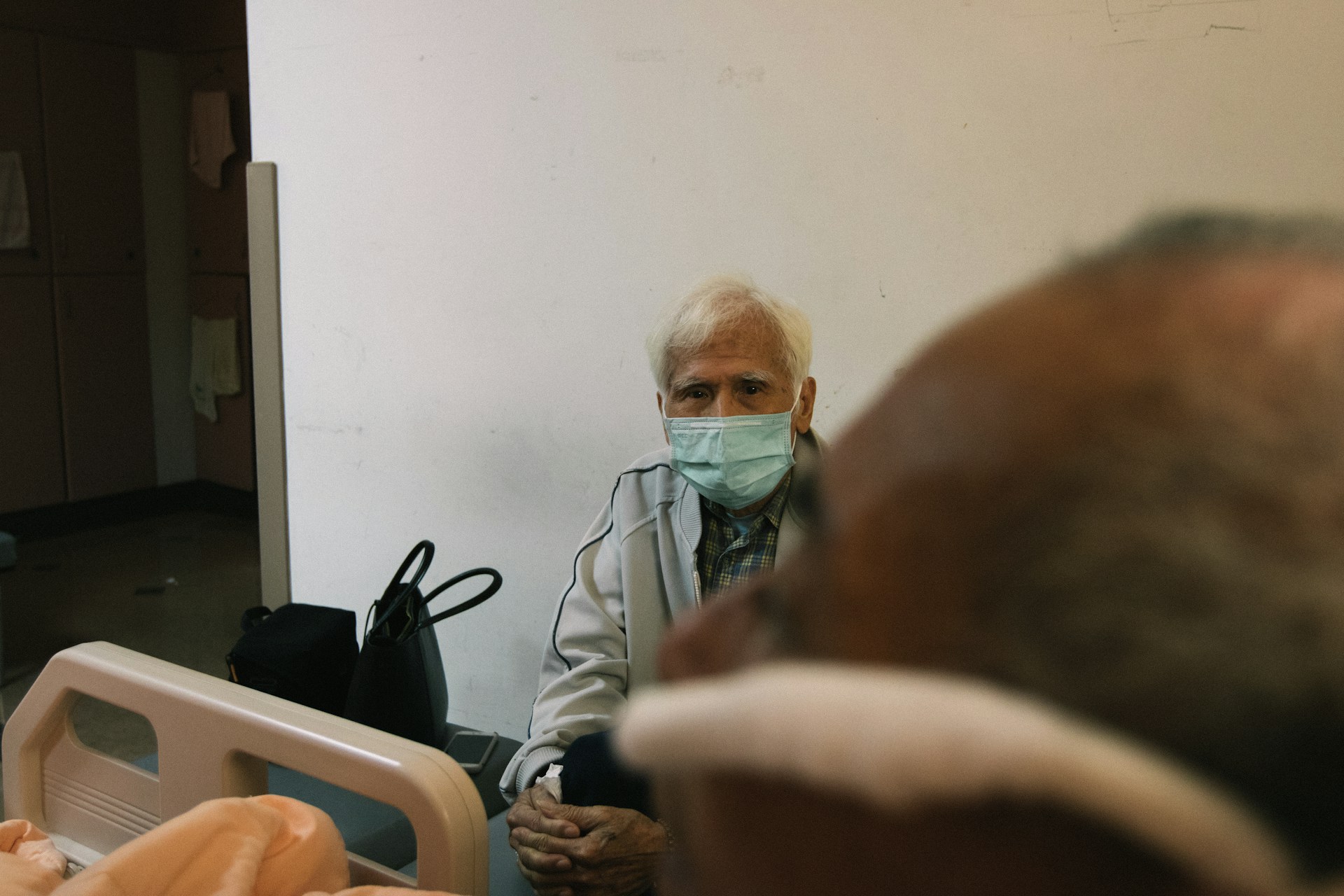Determinants of Food Waste Among Household in Rural and Urban Areas of Bogor Regency
Determinan Food Waste Rumah Tangga Wilayah Perkotaan dan Perdesaan Kabupaten Bogor

Background: Food Waste (FW) remains a major concern both domestically and globally, with households being the largest contributors.
Objectives: This study aimed to determine the total generation of FW in households at risk of stunting and analyze its determinants in urban and rural areas of Bogor Regency.
Methods: A quantitative method with a cross-sectional study design was conducted from June to July 2023 in Ciampea and Sukajaya Subsitricts, Bogor Regency. This study involved 168 households as the samples, calculated using the SNI 19-3964-1994 method for sampling and measuring urban waste generation and composition. The inclusion criterion was households with at least one stunting risk factor, according to the National Family Planning Coordination Body or BKKBN. FW determinants included family characteristics and practices (planning, purchasing, storing, cooking, and consuming). The obtained data were then analyzed using chi-square tests and logistic regression.
Results: The total FW generated was 5.51 kg/cap/year (urban: 4.08 kg/cap/year; rural: 5.07 kg/cap/year). The most wasted food groups were vegetables and cereals/tubers. Urban households with high income were 4.3 times more likely to generate FW (OR=4.32, CI=1.72 – 10.77). Meanwhile, those with inadequate knowledge were 3.49 times more likely to generate FW (OR=3.49, CI=1.39 – 8.79), and those not planning purchases and processing according to preferences were 4.3 times more likely to generate FW (OR=4.32, CI=1.72 – 10.77). Rural households that did not store food properly were 3.81 times more likely to generate FW (OR=3.81, CI=1.22 – 12.03).
Conclusions: The total generation of FW in rural households was higher than in urban households. The determinants of FW in urban areas were income, knowledge, and planning practices, whereas in rural areas, it was storage practices.
HLPE. Food Losses And Waste In The Context Of Sustainable Food Systems A Report By The High Level Panel Of Experts On Food Security And Nutrition. Www.Fao.Org/Cfs/Cfs-Hlpe (2014).
FAO. Global Initiative On Food Loss And Waste Reduction 2 0 1 5. Http://Cait.Wri.Org (2015).
Kementrian Perencanaan Pembangunan Nasional/Bappenas. Food Loss And Waste Di Indonesia Dalam Rangka Mendukung Penerapan Ekonomi Sirkular Dan Pembangunan Rendah Karbon. (2021).
United Nation Environment Programme. Food Waste Index Report 2021. (2021).
HLPE. Food Security And Nutrition: Building A Global Narrative Towards 2030. A Report By The High Level Panel Of Experts On Food Security And Nutrition Of The Committee On World Food Security. Www.Fao.Org/Cfs/Cfs-Hlpe (2020).
Kementrian Kesehatan Republik Indonesia. Buku Saku Hasil Survei Status Gizi Indonesia (SSGI) 2022. (2022).
BPS Provinsi Jawa Barat. Provinsi Jawa Barat dalam Angka 2022. (BPS Provinsi Jawa Barat, Jawa Barat, 2022).
Ananda, J., Karunasena, G. G., Mitsis, A., Kansal, M. & Pearson, D. Analysing Behavioural And Socio-Demographic Factors And Practices Influencing Australian Household Food Waste. J Clean Prod 306, 127280 (2021).
Xiao, J. Et Al. Megacity’s Pathway Toward Sustainable Food Waste Management And Its Environmental Performance In A Developing Country: Evidence From Shanghai, China. Science Of The Total Environment 892, 164706 (2023). https://doi.org/10.1016/j.foodpol.2020.101896.
Ismael, R. K. Quantification Of Food Waste In Retail Operations: A Fruit And Vegetable Wastage Case In Paraguay. Environmental Challenges 10, 100665 (2023). https://doi.org/10.1016/j.envc.2022.100665.
Spiker, M. L., Hiza, H. A. B., Siddiqi, S. M. & Neff, R. A. Wasted Food, Wasted Nutrients: Nutrient Loss From Wasted Food In The United States And Comparison To Gaps In Dietary Intake. J Acad Nutr Diet 117, 1031-1040.E22 (2017). https://doi.org/10.1016/j.jand.2017.03.015.
Dhokhikah, Y., Trihadiningrum, Y. & Sunaryo, S. Community Participation In Household Solid Waste Reduction In Surabaya, Indonesia. Resour Conserv Recycl 102, 153–162 (2015). https://doi.org/10.1016/j.resconrec.2015.06.013.
Soma, T. Space To Waste: The Influence Of Income And Retail Choice On Household Food Consumption And Food Waste In Indonesia. Int Plan Stud 25, 372–392 (2020). https://doi.org/10.1080/13563475.2019.1626222.
Aschemann-Witzel, J., Giménez, A. & Ares, G. Household Food Waste In An Emerging Country And The Reasons Why: Consumer´S Own Accounts And How It Differs For Target Groups. Resour Conserv Recycl 145, 332–338 (2019). https://doi.org/10.1016/j.resconrec.2019.03.001.
Mallinson, L. J., Russell, J. M. & Barker, M. E. Attitudes And Behaviour Towards Convenience Food And Food Waste In The United Kingdom. Appetite 103, 17–28 (2016). https://doi.org/10.1016/j.appet.2016.03.017.
Zhang, H., Duan, H., M. Andric, J., Song, M. & Yang, B. Characterization Of Household Food Waste And Strategies For Its Reduction: A Shenzhen City Case Study. Waste Management 78, 426–433 (2018). https://doi.org/10.1016/j.wasman.2018.06.010
Romani, S., Grappi, S., Bagozzi, R. P. & Barone, A. M. Domestic Food Practices: A Study Of Food Management Behaviors And The Role Of Food Preparation Planning In Reducing Waste. Appetite 121, 215–227 (2018). https://doi.org/10.1016/j.appet.2017.11.093.
Giordano, C., Alboni, F. & Falasconi, L. Quantities, Determinants, And Awareness Of Households’ Food Waste In Italy: A Comparison Between Diary And Questionnaires Quantities. Sustainability (Switzerland) 11, (2019). https://doi.org/10.3390/su11123381.
Pamela, Nugraha, A., Aritonang, M. & Hutajulu, J. P. Determinants Of Household Food Waste Value In Indonesia: A Study Case On High Education Level Parents. IOP Conf Ser Earth Environ Sci 399, 012121 (2019). https://doi.org/10.1088/1755-1315/399/1/012121.
Bravi, L., Francioni, B., Murmura, F. & Savelli, E. Factors Affecting Household Food Waste Among Young Consumers And Actions To Prevent It. A Comparison Among UK, Spain And Italy. Resour Conserv Recycl 153, (2020). https://doi.org/10.1016/j.resconrec.2019.104586.
Nordin, N. H., Kaida, N., Othman, N. A., Akhir, F. N. M. & Hara, H. Reducing Food Waste: Strategies For Household Waste Management To Minimize The Impact Of Climate Change And Contribute To Malaysia’s Sustainable Development. In IOP Conference Series: Earth And Environmental Science Vol. 479 (Institute Of Physics Publishing, 2020). https://doi.org/10.1088/1755-1315/479/1/012035.
Teng, C. C., Chih, C., Yang, W. J. & Chien, C. H. Determinants And Prevention Strategies For Household Food Waste: An Exploratory Study In Taiwan. Foods 10, (2021). https://doi.org/10.3390/foods10102331.
Bhatia, A. & Sharma, S. Identifying Determinants Of Household Food Waste Behavior In Urban India. Cleaner Waste Systems 6, 100105 (2023). https://doi.org/10.1016/j.clwas.2023.100105.
Badan Pusat Statistik. Klasifikasi Desa Perkotaan Dan Pedesaan Di Indonesia 2020. (2020).
Badan Standarisasi Nasional. Metode Pengambilan Dan Pengukuran Contoh Timbulan Dan Komposisi Sampah Perkotaan. (Jakarta, 2019).
Van Herpen, E. Et Al. A Validated Survey To Measure Household Food Waste. Methodsx 6, 2767–2775 (2019). https://doi.org/10.1016/j.mex.2019.10.029.
Menteri Kesehatan Republik Indonesia. Peraturan Menteri Kesehatan Republik Indonesia Nomor 41 Tahun 2014 Tentang Pedoman Gizi Seimbang. (Jakarta, 2014).
Siswanto Et Al. STUDI Diet Total: Survei Konsumsi Makanan Individu Indonesia 2014. (Lembaga Penerbitan Badan Penelitian Dan Pengenmbangan Kesehatan Kementrian Kesehatan RI, Jakarta, 2014).
Kementrian Pertanian. Statistik Konsumsi Pangan Tahun 2022. (Pusat Data Dan Sistem Informasi Pertanian, Jakarta, 2022).
Tyas, F. P. S. & Herawati, T. Kualitas Pernikahan Dan Kesejahteraan Keluarga Menentukan Kualitas Lingkungan Pengasuhan Anak Pada Pasangan Yang Menikah Usia Muda. Jurnal Ilmu Keluarga Dan Konsumen 10, 1–12 (2017). https://doi.org/10.24156/jikk.2017.10.1.1.
Keputusan Gubernur Jawa Barat. Upah Minimum Kabupaten Kota Di Daerah Provinsi Jawa Barat Tahun 2023. (2022).
Rahma Ginting, I. & Maulana, R. Dampak Kebiasaan Merokok Pada Pengeluaran Rumah Tangga Impact Of Smoking Habits On Household Expenditures. Jurnal Kebijakan Kesehatan Indonesia 09, 77–82 (2020).
Badan Pusat Statistik. Pengeluaran Untuk Konsumsi Penduduk Indonesia, Berdasarkan Hasil Susenas Maret 2022. (BPS, Jakarta, 2022).
Wijayati, P. D., Harianto, N. & Suryana, A. Permintaan Pangan Sumber Karbohidrat Di Indonesia. Analisis Kebijakan Pertanian 17, 13 (2019).
Faharuddin, F., Mulyana, A., Yamin, M. & Yunita, Y. Nutrient Elasticities Of Food Consumption: The Case Of Indonesia. J Agribus Dev Emerg Econ 7, 198–217 (2017). https://doi.org/10.1108/JADEE-02-2016-0008.
Safitri, A. Et Al. Konsumsi Makanan Penduduk Indonesia Ditinjau Dari… (Safitri A; Dkk) Konsumsi Makanan Penduduk Indonesia Ditinjau Dari Norma Gizi Seimbang (Food Consumption In Term Of The Norm Of Balanced Nutrition).
Lybaws, L., Renyoet, B. S., Pratiwi, T. & Sanubari, E. Analisis Hubungan Food Coping Strategies Terhadap Ketahanan Pangan Rumah Tangga Miskin Di Kota Salatiga Analysis On The Correlation Between Food Coping Strategy Towards Poor Household’s Food Security In Salatiga City. Amerta Nutrition 6, 32–43 (2022). https://doi.org/10.20473/amnt.v6i1.2.
Tan Yen Lian & Ulysses Dorotheo. The Tobacco Control Atlas: ASEAN Region, Fourth Edition. (Southeast Asia Tobacco Control Alliance (SEATCA), Bangkok, Thailand, 2018).
Mawardi, M. Problematika Perkawinan Di Bawah Umur. Analisa 19, 1–12 (2012).
Di Talia, E., Simeone, M. & Scarpato, D. Consumer Behaviour Types In Household Food Waste. J Clean Prod 214, 166–172 (2019).
Secondi, L., Principato, L. & Laureti, T. Household Food Waste Behaviour In EU-27 Countries: A Multilevel Analysis. Food Policy 56, 25–40 (2015).
Mattar, L., Abiad, M. G., Chalak, A., Diab, M. & Hassan, H. Attitudes And Behaviors Shaping Household Food Waste Generation: Lessons From Lebanon. J Clean Prod 198, 1219–1223 (2018). https://doi.org/10.1016/j.jclepro.2018.07.085.
FAO. The State Of Food And Agriculture. 2019, Moving Forward On Food Loss And Waste Reduction. (Rome, 2019).
Mccarthy, B. & Liu, H. B. Food Waste And The ‘Green’ Consumer. Australasian Marketing Journal 25, 126–132 (2017). https://doi.org/10.1016/j.ijdrr.2022.103423.
Niles, M. T. Majority Of Rural Residents Compost Food Waste: Policy And Waste Management Implications For Rural Regions. Front Sustain Food Syst 3, (2020). https://doi.org/10.3389/fsufs.2019.00123.
Khalid, S. Et Al. Assessment Of Nutritional Loss With Food Waste And Factors Governing This Waste At Household Level In Pakistan. J Clean Prod 206, 1015–1024 (2019). https://doi.org/10.1016/j.jclepro.2018.09.138.
Betz, A., Buchli, J., Göbel, C. & Müller, C. Food Waste In The Swiss Food Service Industry – Magnitude And Potential For Reduction. Waste Management 35, 218–226 (2015). https://doi.org/10.1016/j.wasman.2014.09.015.
Wharton, C., Vizcaino, M., Berardy, A. & Opejin, A. Waste Watchers: A Food Waste Reduction Intervention Among Households In Arizona. Resour Conserv Recycl 164, 105109 (2021). https://doi.org/10.1016/j.resconrec.2020.105109.
Engström, R. & Carlsson-Kanyama, A. Food Losses In Food Service Institutions Examples From Sweden. Food Policy 29, 203–213 (2004). https://doi.org/10.1016/j.foodpol.2004.03.004.
Derqui, B., Fernandez, V. & Fayos, T. Towards More Sustainable Food Systems. Addressing Food Waste At School Canteens. Appetite 129, 1–11 (2018). https://doi.org/10.1016/j.appet.2018.06.022.
Lorenz, B. A.-S., Hartmann, M. & Langen, N. What Makes People Leave Their Food? The Interaction Of Personal And Situational Factors Leading To Plate Leftovers In Canteens. Appetite 116, 45–56 (2017). https://doi.org/10.1016/j.appet.2017.04.014.
Silvennoinen, K., Heikkilä, L., Katajajuuri, J.-M. & Reinikainen, A. Food Waste Volume And Origin: Case Studies In The Finnish Food Service Sector. Waste Management 46, 140–145 (2015). https://doi.org/10.1016/j.wasman.2015.09.010.
Papargyropoulou, E. Et Al. Patterns And Causes Of Food Waste In The Hospitality And Food Service Sector: Food Waste Prevention Insights From Malaysia. Sustainability 11, 6016 (2019). https://doi.org/10.3390/su11216016.
Derqui, B., Fernandez, V. & Fayos, T. Towards More Sustainable Food Systems. Addressing Food Waste At School Canteens. Appetite 129, 1–11 (2018). https://doi.org/10.1016/j.appet.2018.06.022.
Malefors, C. Et Al. Towards A Baseline For Food-Waste Quantification In The Hospitality Sector—Quantities And Data Processing Criteria. Sustainability 11, 3541 (2019). https://doi.org/10.3390/su11133541.
Leverenz, D. Et Al. Quantifying The Prevention Potential Of Avoidable Food Waste In Households Using A Self-Reporting Approach. Resour Conserv Recycl 150, 104417 (2019).
Gaiani, S., Caldeira, S., Adorno, V., Segrè, A. & Vittuari, M. Food Wasters: Profiling Consumers’ Attitude To Waste Food In Italy. Waste Management 72, 17–24 (2018). https://doi.org/10.1016/j.wasman.2017.11.012.
Stefan, V., Van Herpen, E., Tudoran, A. A. & Lähteenmäki, L. Avoiding Food Waste By Romanian Consumers: The Importance Of Planning And Shopping Routines. Food Qual Prefer 28, 375–381 (2013). https://doi.org/10.1016/j.foodqual.2012.11.001.
Koivupuro, H.-K. Et Al. Influence Of Socio-Demographical, Behavioural And Attitudinal Factors On The Amount Of Avoidable Food Waste Generated In Finnish Households. Int J Consum Stud 36, 183–191 (2012). https://doi.org/10.1111/j.1470-6431.2011.01080.x.
Abdelradi, F. Food Waste Behaviour At The Household Level: A Conceptual Framework. Waste Management 71, 485–493 (2018). https://doi.org/10.1016/j.wasman.2017.10.001.
Anggraini Agusinta Kusuma. Estimasi Nilai Kerugian Ekonomi Rumah Tangga Akibat Pemborosan Pangan (Food Waste): Studi Kasus Rumah Tangga Di Sekitar Kampus IPB. (2020).
Di Talia, E., Simeone, M. & Scarpato, D. Consumer Behaviour Types In Household Food Waste. J Clean Prod 214, 166–172 (2019). https://doi.org/10.1016/j.jclepro.2018.12.216.
Hebrok, M. & Heidenstrøm, N. Contextualising Food Waste Prevention - Decisive Moments Within Everyday Practices. J Clean Prod 210, 1435–1448 (2019). https://doi.org/10.1016/j.jclepro.2017.03.069.
Principato, L., Secondi, L., Cicatiello, C. & Mattia, G. Caring More About Food: The Unexpected Positive Effect Of The Covid-19 Lockdown On Household Food Management And Waste. Socioecon Plann Sci 82, (2022). https://doi.org/10.1016/j.seps.2020.100953.
Kharisma, B., Hasanah, A., Soemitro Remi, S. & Indah Zakia, I. In. The Pattern Of Poor Household Food Consumption: The Case Of West Java Province. Economía Agraria Y Recursos Naturales 21, 7–27 (2021). https://doi.org/10.7201/earn.2021.02.01.
Aryani, N. A. Evaluasi Pelaksanaan Program Pemberian Makanan Tambahan Pemulihan ( PMT-P ) Untuk Penderita Balita Gizi Buruk (Studi Kasus Di Puskesmas Welahan I Kabupaten Jepara ). (Universitas Negeri Semarang, 2019).
Setti, M., Banchelli, F., Falasconi, L., Segrè, A. & Vittuari, M. Consumers’ Food Cycle And Household Waste. When Behaviors Matter. J Clean Prod 185, 694–706 (2018). https://doi.org/10.1016/j.jclepro.2018.03.024.
Pamela, Nugraha, A., Aritonang, M. & Hutajulu, J. P. Determinants Of Household Food Waste Value In Indonesia: A Study Case On High Education Level Parents. IOP Conf Ser Earth Environ Sci 399, 012121 (2019). https://doi.org/10.1088/1755-1315/399/1/012121.
Lestari, S. C. & Halimatussadiah, A. Kebijakan Pengelolaan Sampah Nasional: Analisis Pendorong Food Waste Di Tingkat Rumah Tangga. Jurnal Good Governance (2022) https://doi.org/10.32834/Gg.V18i1.457.
Ponis, S. T., Papanikolaou, P.-A., Katimertzoglou, P., Ntalla, A. C. & Xenos, Konstantinos. I. Household Food Waste In Greece: A Questionnaire Survey. J Clean Prod 149, 1268–1277 (2017). https://doi.org/10.32834/gg.v18i1.457.
Dobernig, K. & Schanes, K. Domestic Spaces And Beyond: Consumer Food Waste In The Context Of Shopping And Storing Routines. Int J Consum Stud 43, 480–489 (2019). https://doi.org/10.1111/ijcs.12527.
Copyright (c) 2025 Amerta Nutrition

This work is licensed under a Creative Commons Attribution-ShareAlike 4.0 International License.
AMERTA NUTR by Unair is licensed under a Creative Commons Attribution-ShareAlike 4.0 International License.
1. The journal allows the author to hold the copyright of the article without restrictions.
2. The journal allows the author(s) to retain publishing rights without restrictions
3. The legal formal aspect of journal publication accessibility refers to Creative Commons Attribution Share-Alike (CC BY-SA).
4. The Creative Commons Attribution Share-Alike (CC BY-SA) license allows re-distribution and re-use of a licensed work on the conditions that the creator is appropriately credited and that any derivative work is made available under "the same, similar or a compatible license”. Other than the conditions mentioned above, the editorial board is not responsible for copyright violation.






